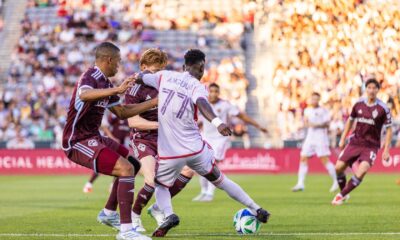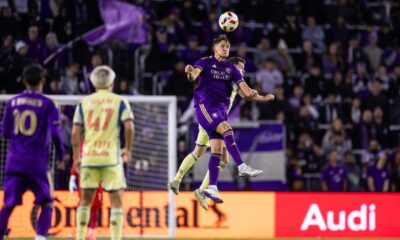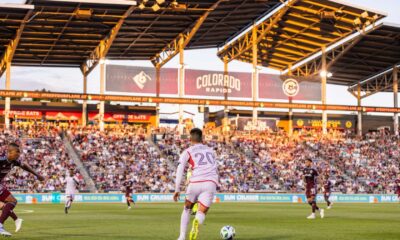Orlando City
Orlando City vs. D.C. United: Final Score 1-1 as Lions Open Road Schedule with a Draw
The Lions finally got a goal in open play through Duncan McGuire but couldn’t hold the lead, settling for a draw at D.C. United.
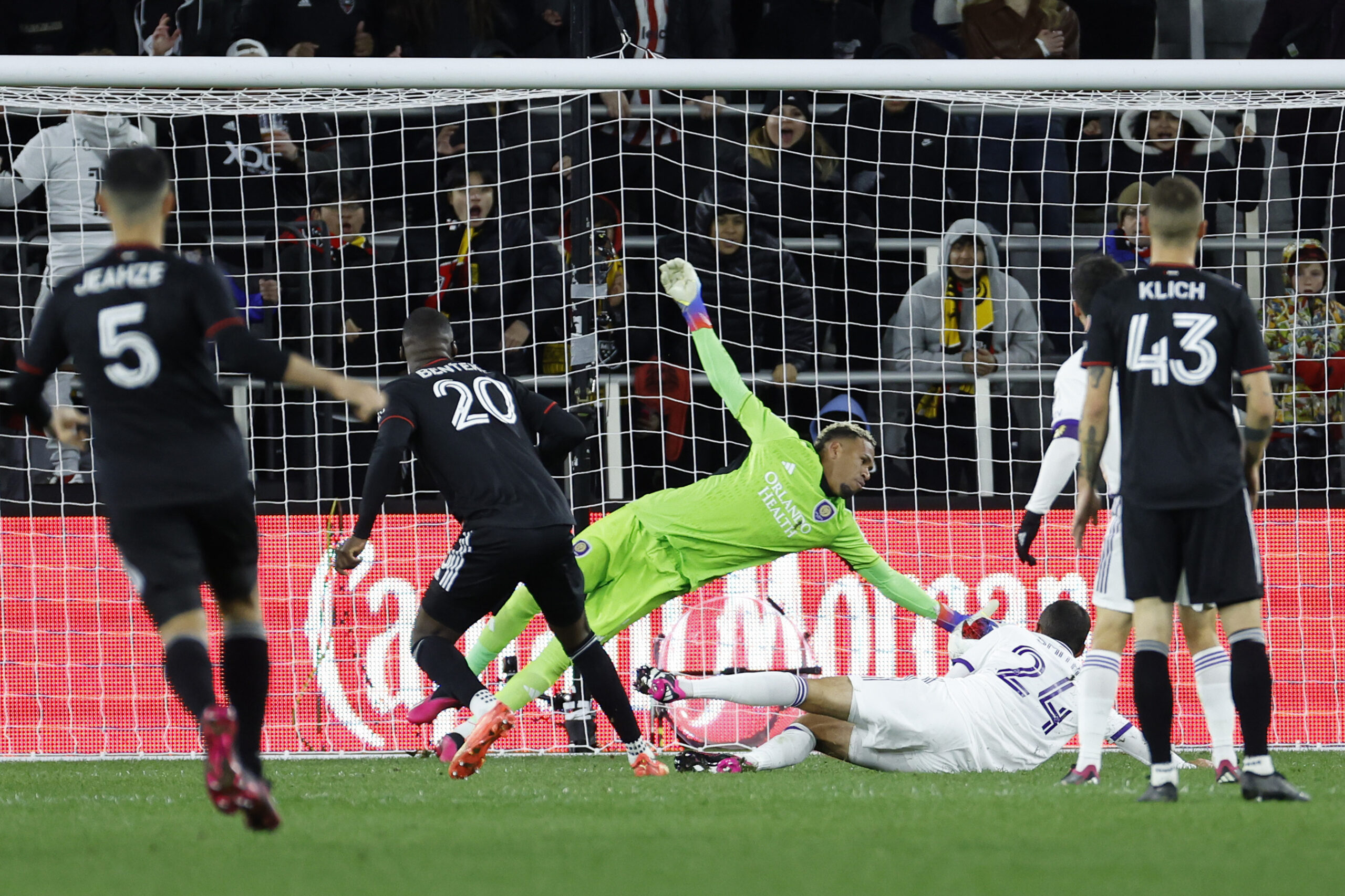
The good news is that Orlando City finally scored a goal from open play. The bad news is that the Lions finally conceded a goal on the season as they left Audi Field with a 1-1 draw against D.C. United. Rookie Duncan McGuire put Orlando City (1-0-2, 5 points) on the board in the second half, but an inch-perfect shot by Chris Durkin enabled United (1-1-1, 4 points) to claim a point.
“In the first half today, we didn’t look like us,” Orlando City Head Coach Oscar Pareja said after the match. “I don’t blame the players. I just think that they did great trying to adjust. The intensity was good. We would like to play much better, obviously, but they’re always good (in terms of intensity and discipline).”
Pareja rotated his squad from Tuesday night’s match in Mexico. Pedro Gallese again started in goal but his defense was a three/five depending on whether Orlando had the ball or not. Rookie Abdi Salim, Rodrigo Schlegel, and Kyle Smith got the start, with Rafael Santos getting his first start at left wingback and Ivan Angulo playing wide right, with Wilder Cartagena and Mauricio Pereyra in central midfield. The attacking line featured Dagur Dan Thorhallsson and Facundo Torres on the wings underneath McGuire, who got his first start up top.
As has been the case throughout this young season, the Lions provided little to no danger in the attack in the opening half, while Gallese bailed the team out multiple times to keep the game scoreless through the first 45 minutes.
The hosts started to cause trouble early when former Orlando fullback Ruan sent in a good cross (I know!) in the sixth minute. Gallese came off his line to get a hand to it. The ball fell to Theodore Ku-Dipietro, who had his shot blocked in front.
Orlando City’s first shot attempt came from Wilder Cartagena in the 17th minute. He was way outside the box and obviously not in as much space as he thought because he got his shot blocked and it didn’t even make it inside the penalty area.
Gallese made a couple of tame stops early but in the 28th minute, the ball ended up with Christian Benteke all alone in front of goal when Salim missed getting his head to a cross. Benteke’s shot was good but Gallese’s save was better.
In the 34th minute, Gallese robbed Ku-Dipietro with a big stop and then Benteke nodded off target on the recyle attempt.
The Lions nearly got their first quality look of the game in the 41st when Pereyra sent a ball in for Torres. The younger Uruguayan’s first touch was a bit heavy though, and Tyler Miller scrambled off his line to smother it. It was practically Miller’s only activity in the opening 45.
Gallese had no trouble collecting Pedro Santos’ shot from distance in the 42nd minute, taking it on the first hop. Benteke fired wide of goal off Miller’s long free kick deep in first-half stoppage time as D.C. continued to present threats to the Orlando City goal.
The Lions had maybe their best attacking movement of the half deep in stoppage time when Torres sent a headed pass in behind down the left. McGuire ran onto it but could only win a corner kick.
D.C. held wide margins in possession (57.2%-42.8%), passing accuracy (85.2%-77.1%), shots (8-3), and shots on target (4-0). Orlando City had the first half’s only corner kick attempt deep in stoppage time but provided no threat from it.
If not for Gallese, the score could have been much different at the break.
Pareja changed shape and personnel at the break, sending Robin Jansson on for Salim and Martin Ojeda on for Torres. The Lions went to a four-man back line with Smith on the right, pushing Angulo up to the wing.
The move opened the game up a bit and the Lions were able to get on the ball more but also allowed D.C. to advance more easily as well, at times.
“We did expect the game in the second half we could have more volume and more actions up front,” Pareja said. “We knew the defensive five in the first half would probably reduce our possibilties because we were playing with one more defender and one less attacker. But we wanted to have solidness and try to see if we can create some more sequences around, in the flanks, and I think we did but not with so much consistency. Second half when we made the change of the model and the change of the personnel, we knew that this was going to surprise D.C. at some point and that we would add one more forward, and that happened.”
Thorhallsson finally gave the Lions a shot on goal in the 48th minute, sending his attempt from distance directly in at Miller, who had no trouble catching it. In the 52nd minute, Ojeda sent a ball straight to Miller that may have been a weak shot or an attempted through ball for McGuire that didn’t work out.
But a minute later, the Lions found their breakthrough.
Smith got the ball on the right side from Angulo and sent a cross to the back post. Thorhallsson was there and nodded it back across the front of goal. McGuire arrived to bundle the ball in despite a challenge from Steve Birnbaum and the ball finally found the inside of the net for Orlando. A check for offside confirmed the goal — McGuire’s first as a professional and on Thorhallsson’s first MLS assist.
The rookie celebrated his goal with a celebratory flip.
“It was a great team buildup. Great cross,” McGuire said. “I thought I could get my head onto (the initial cross from Smith). I turned, and Dagur played a great ball across the face of goal — made the goalie out of the play — and then it was a simple tap-in. Dagur could not have made it easier for me.”
“It’s a dream for him,” Pareja said of his rookie’s goal. “I’m very pleased because he’s a young kid and very committed with the group, and an American player that came from the college system, which is fantastic. And he’s proven already in his first game that he belongs. We’re very happy for him.”
The game had hardly restarted when it seemed D.C. would equalize. A shot that was blocked riccocheted off the arm of Wilder Cartagena and the referee immediately pointed to the spot. But Cartagena’s arm was not only tucked in, but his entire forearm was behind his back. That, added to the close proximity and sudden change of direction made the decision a harsh one, and the video assistant referee, Jorge Gonzalez, suggested that referee Jon Freemon have another look. Freemon went to the monitor and quickly overturned his initial call.
Pereyra turned down an opportunity to shoot from the top of the box in the 61st minute, and instead tried to thread a ball through the defense to Ojeda, who appeared to be offside anyway. Ojeda re-established himself and Pereyra played it to his left. Ojeda tried to turn and shoot in a single motion but couldn’t get squared all the way around and left his shot wide.
Seconds later, at the other end, Smith did well to erase a good cross from his former teammate, Ruan.
The Lions dealt with a series of corner kicks shortly after that but D.C. couldn’t pay them off. The best look for the hosts was a shot through traffic by fullback Mohanad Jeahze, but it was well wide of the goal in the 73rd minute.
Ojeda put a shot on target in the 79th but it was from distance and right at Miller.
A minute later, Durkin equalized. Smith and Schlegel were unable to gain control in the corner and the ball was sent to Durkin at the top of the area. He faked a shot on his right and pulled the ball back onto his left as second-half sub Cesar Araujo went for the block. Durkin then fired an unstoppable shot just inside the far post that Gallese somehow almost got to.
It was Durkin’s third career MLS goal and his second against Orlando City. Both cost the Lions points at Audi Field.
Ruan fired a shot well up into the crowd in the 86th after an initial clearance of a D.C. corner kick.
The final seconds of stoppage time produced a set piece for the Lions near the left corner, won by substitute Gaston Gonzalez. Ojeda played the ball to the penalty spot for Jansson, who had peeled away from goal. The Beefy Swede was open for the shot but mishit it badly and it went nowhere near the goal frame.
Orlando survived a quick D.C. push up the pitch and the final whistle brought the proceedings to an end.
D.C.’s advantage in possession dipped a little in the second half, but the hosts still finished with a comfortable advantage in that stat (56.7%-43.3%). United also led in passing accuracy (81.1%-75.5%), shots (16-9), shots on target (5-4), and corners (5-2).
“I thought we looked much, much better,” Pareja said of the second half. “I think we had a couple actions. I think we had a goal. And we accomplished that objective.”
Orlando City has made it through three of the five matches in 15 days and will return home to face Tigres in the second leg of Concacaf Champions league play in the Round of 16 Wednesday night at Exploria Stadium. The next league game for the Lions is set for next Saturday night at home against Charlotte.
Lion Links
Lion Links: 6/17/25
Orlando City and Orlando Pride players on Team of the Week, USMNT Gold Cup continues, and more.
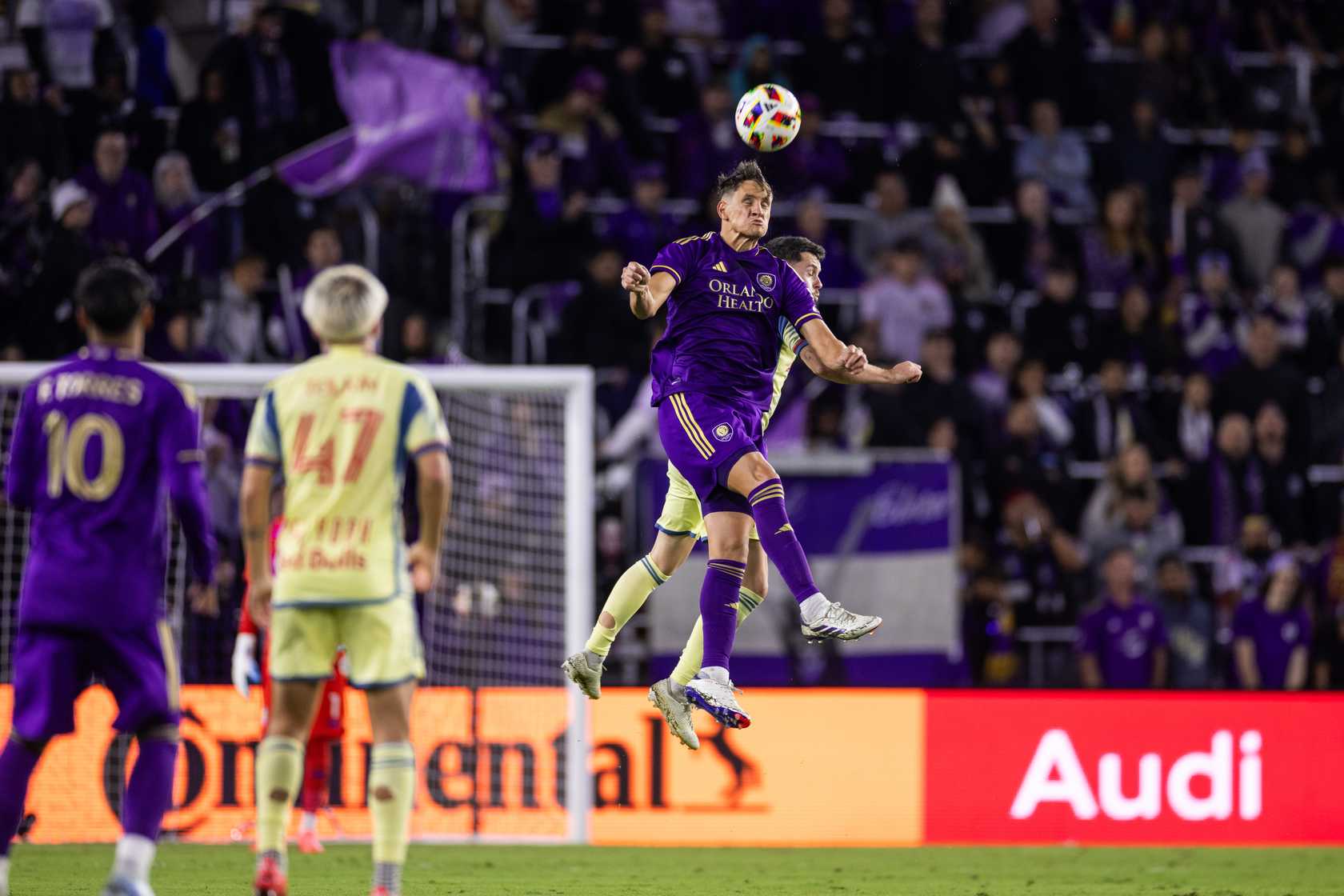
Welcome to Wedn…er…Tuesday, Mane Landers. That’s right, I’m here a day early and not a moment too late. Orlando is knee deep in soccer, thanks to the FIFA Club World Cup on top of our favorite Orlando City and Orlando Pride clubs. We will have coverage of the matches taking place in the City Beautiful. Before we get started today, join us in wishing a happy 25th birthday to Orlando Pride midfielder Summer Yates. Now, let’s get to the links.
Schlegel Honored
Rodrigo Schlegel had a pretty good match against the Colorado Rapids. Despite not being named Man of the Match in our Player Grades, he did make the MLS Team of the Week bench. Meanwhile, Orlando held steady at the ninth spot in ESPN’s MLS Power Rankings, while dropping two spots from seventh to ninth in SI.com’s Power Rankings despite winning on the road. It just shows how very accurate and scientific power rankings are, doesn’t it?
Quadruple Honors for the Pride
The Orlando Pride saw Schlegel’s TotW Bench honor and said we can do better. Barbra Banda, Cori Dyke, Emily Sams, and Anna Moorhouse all made the NWSL Team of the Week from the Attacking Third. Congratulations to the Pride for covering a third of the Attacking Third’s selections.
Moorhouse is also up for Player of the Week and Save of the Week. As of this morning, she is not leading either category so you know what to do.
The USMNT Gold Cup Journey Continues
The Concacaf Gold Cup group stage is underway, with the USMNT securing a 5-0 victory over Trinidad & Tobago Sunday evening. I’m always for beating Trinidad & Tobago, but more talented teams and tougher matches lie ahead. Next up for the USMNT is Saudi Arabia. I know what you’re thinking, and you’re correct. Saudi Arabia isn’t a Concacaf nation, but the team is the invitee for this Gold Cup. The match is Thursday night at 9:15 p.m. at Q2 Stadium in Austin, TX. The U.S. will most likely need a win to secure the top spot in the group.
FIFA Club World Cup Results
The Club World Cup, which will visit Orlando’s Inter&Co Stadium later today (we’ll be on hand with the coverage, naturally), continued early this week with Bayern Munich obliterating Auckland City 10-0, PSG defeating Atletico Madrid 4-0, Botafogo beating the Seattle Sounders 2-1, and Facundo Torres and Palmeiras drawing Porto 0-0 on Sunday. In the Monday slate, Chelsea defeated LAFC 2-0, and Boca Juniors and Benfica drew 2-2. Overshadowing all of this is the poor attendance, despite FIFA spending millions to boost said attendance.
Free Kicks
- One might think that a club sitting second in the official standings on a three-match winning streak would have matching ranks in all the various power rankings. However, one would be wrong, because although the Pride are in the second spot in the SI.com Power Rankings, the club sits at third in the ESPN.com Power Rankings. Do I need to say anything?
- You don’t often see Barcelona get passed over for an MLS club, but that is exactly what happened despite Barcelona calling FIFA to get a spot in the Club World Cup. That MLS club was LAFC, and it had to earn its way in by beating Club America.
- Liverpool has set a date for the medical for Florian Wirtz following the record transfer.
- Congratulations to Orlando City’s Alex Freeman on his performance in his first cap for the USMNT in a competitive match.
That will do it for today. Check back as we get you ready for the matches this week. Vamos Orlando!
Orlando City
Orlando City vs. Colorado Rapids: Player Grades and Man of the Match
How did your favorite Lions perform in Orlando City’s 1-0 win over the Colorado Rapids?
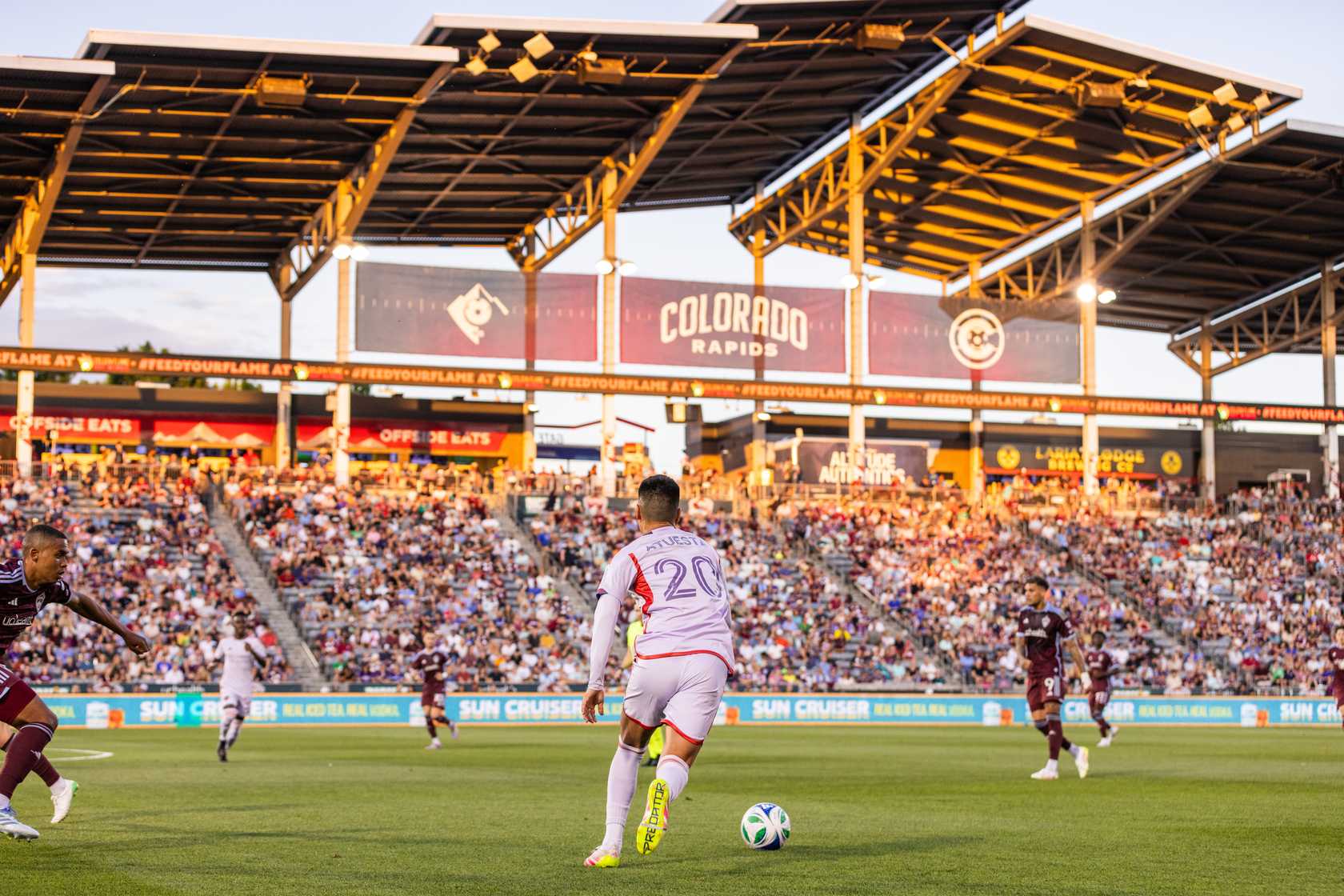
Orlando City used a professional performance to defeat the Colorado Rapids 1-0 near the Mile High City. It’s a big win for the Lions after two consecutive losses to Atlanta United and the Chicago Fire. It also gives the team some good vibes heading into next week’s international break.
Let’s take a look at the individual performances in this big win.
Starters
GK, Pedro Gallese, 8 (MotM) — Gallese had a massive game for his eighth clean sheet of the season. The shot stopper was credited with two saves and they were both quality. In the 50th minute, he made a one-handed save on a Rafael Navarro header and pushed Djordje Milhailovic’s shot wide while defending his near post in the 72nd minute. Apart from his goalkeeping, Gallese touched the ball 32 times, completing 38.5% of his 26 passes, including four of his 20 long balls. He was also credited with three clearances.
D, David Breaklo, 6 — The starting left back touched the ball 63 times and completed 91.8% of his 49 passes. He completed two of his three long balls, but his lone cross was incomplete. Brekalo also recorded one interception, won an aerial duel, and had eight clearances defensively. He didn’t have any attacking statistics, contributing to the clean sheet.
D, Robin Jansson, 6.5 — Jansson had 65 touches, completing 93.1% of his team-high 58 passes, including four of his seven long balls. He won one tackle and had four clearances defensively. The center back was a bright spot early, making a couple of huge challenges to keep Colorado from getting free chances on goal. Overall, it was a strong performance by the captain.
D, Rodrigo Schlegel, 7 — Schlegel got a first-half booking that sees him suspended for the next game, but the center back was a monster in this game. He had a team-high 86 touches and completed 87.5% of his 56 passes but only one of his five long balls. However, his strength was defensively, where Schlegel recorded an interception and two blocked shots, won three aerial duels, and had an astounding 21 clearances. Despite defending for most of the game, the center back put a shot on target as well.
D, Dagur Dan Thorhallsson, 5.5 — Thorhallsson had 38 touches, completing 85.7% of his 21 passes without attempting any long balls or crosses. The right back added two clearances and a blocked shot defensively. He made some mistakes in his own half that created some issues and didn’t get into the attack at all in this game before being replaced by Kyle Smith in the 72nd minute.
MF, Ivan Angulo, 5.5 — Angulo touched the ball 39 times, completing 83.3% of his 30 passes but didn’t attempt any crosses. The midfielder didn’t attempt any shots either. Defensively, Angulo added a clearance and won an aerial duel, but it was largely an invisible night by the speedster.
MF, Eduard Atuesta, 6 — Atuesta had 65 touches and completed 77.6% of his 49 passes, including a key pass and one of his two long balls. He didn’t take any shots, but the defensive midfielder’s focus was on defense. He recorded one tackle, two aerial duels won, three interceptions, and two clearances in a strong performance. He was replaced by Colin Guske in second-half stoppage time.
MF, Joran Gerbet, 6 — Gerbet got the start over Cesar Araujo in this game due to back spasms for Araujo, touching the ball 57 times. The rookie completed 88.4% of his 43 passes without attempting any long balls or crosses. Like Atuesta, his job was defensive as he had three interceptions, won two aerial duels, and logged five clearances in 90 minutes of action.
MF, Marco Pasalic, 7 — Pasalic was trouble for the Rapids defense. He touched the ball 31 times and completed 86.4% of his 22 passes, including three key passes and his lone long ball. The midfielder’s most significant moment came in the 24th minute, when great vision and a good pass found Martin Ojeda for the game’s long goal. Pasalic took two shots, putting one on target. The attacker left the game in the 72nd minute, replaced by Ramiro Enrique.
F, Luis Muriel, 5.5 — Muriel had 26 touches, completing 80% of his 15 passes with a key pass. The forward took two shots, putting neither on target. He also helped defensively, winning an aerial duel, recording a tackle, and adding a clearance before being replaced by Araujo in the 58th minute. Overall, it wasn’t an impressive performance by the Designated Player.
F, Martin Ojeda, 7 — Ojeda was a game-changer, touching the ball 52 times and completing 90.9% of his 44 passes with a key pass, and connecting on one of his two crosses and his lone long ball. He put one of his two shots on target, a hard attempt that went off the hands of Nico Hansen and in for the game’s only goal. It was a good performance for Ojeda, who came off in second-half stoppage time for Nico Rodriguez.
Substitutes
MF, Cesar Araujo (58’), 6 — Araujo replaced Muriel in the 58th minute as the Lions looked to defend their 1-0 lead. The defensive midfielder had 34 touches and completed 96.4% of his 28 passes, including one key pass. He added a tackle and blocked shot in 32 minutes of action, helping to secure the clean sheet.
D, Kyle Smith (72’), 6 — Smith came on for Thorhallsson in the 72nd minute, touching the ball 23 times at right back. He completed 55.6% of his nine passes with an incomplete long ball and through ball. However, Smith’s contribution came on defense, where he added a tackle, four clearances, and two successful aerial duels to help secure the three points.
F, Ramiro Enrique (72’), 6.5 — Enrique came on for Pasalic in the 72nd minute and was solid in his 18 minutes. He had 10 touches and completed 75% of his eight passes without taking any shots. However, he did precisely what his team needed, holding up the ball, winning an aerial duel, and keeping possession late. His wise decision-making is why he gets such a high grade.
MF, Colin Guske (90 + 1’), N/A — Guske came on for Atuesta in the dying minutes to kill some time. He got booked right after coming on, touching the ball only three times and adding a clearance.
MF, Nico Rodriguez (90 + 1’), N/A — Rodriguez came on with Guske for Ojeda and had nearly an identical performance minus the booking. He touched the ball three times, won an aerial duel, and had a clearance defensively.
That’s how I saw the individual performances in this crucial win for the Lions. Let us know what you thought of the game in the comments below and don’t forget to vote on your Man of the Match.
Lion Links
Lion Links: 6/16/25
Lions and Pride win, USMNT beats Trinidad & Tobago in Gold Cup opener, FIFA Club World Cup weekend recap, and more.
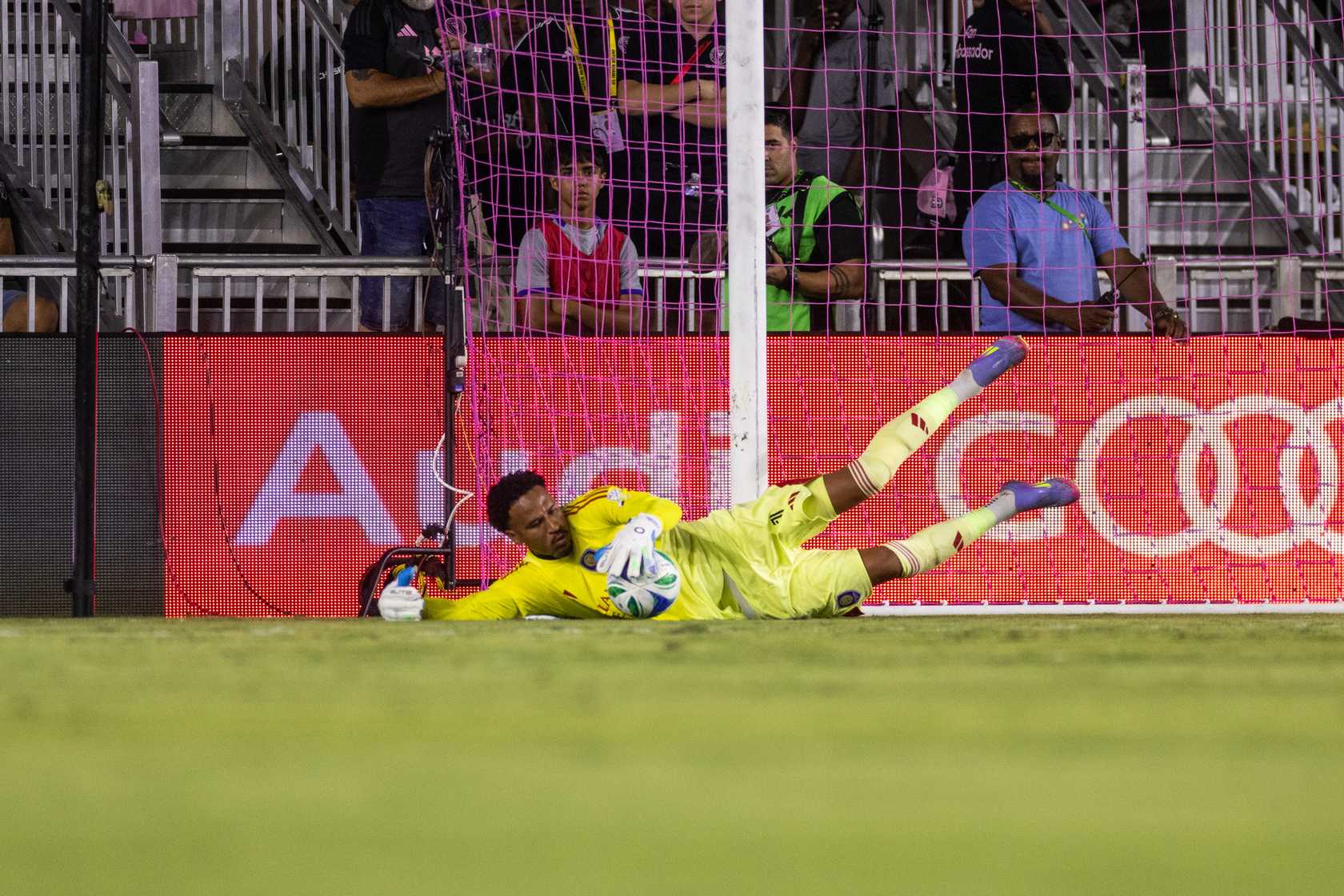
Hello, Mane Landers! I hope all is well with you and belated happy Father’s Day to all you dads out there. The Lions and the Pride both won while OCB was off this weekend. We’ve got plenty to cover today, so let’s get to the links.
Lions Blank Colorado Rapids on the Road
Orlando City defeated the Colorado Rapids 1-0 Saturday at Dick’s Sporting Goods Park. Martin Ojeda scored the lone goal for the Lions in the first half to snap their two-match winless streak. Goalkeeper Pedro Gallese made two saves and earned his eighth clean sheet of the season. With the win, Orlando moved up to fifth in the Eastern Conference standings with 30 points. Orlando City will be off this weekend but will be return to action June 25 on the road at St. Louis City.
Banda’s Goal Lifts Pride Over Bay FC
The Orlando Pride defeated Bay FC 1-0 Friday at PayPal Park in San Jose, CA. After a scoreless first half, Barbra Banda scored the only goal in the match — her eighth goal of the season — and the Pride held on for the win. It’s the team’s third straight 1-0 victory over Bay FC, and the Pride also claimed their fifth clean sheet of the season. Orlando has won three matches in a row and remains second in the NWSL table with 25 points. The Pride will be on the road to take on Racing Louisville Friday.
USMNT Dominates Trinidad & Tobago in Gold Cup Opener
The U.S. Men’s National Team beat Trinidad & Tobago 5-0 Sunday in the opening match of the Concacaf Gold Cup at PayPal Park. Orlando City defender Alex Freeman started the match and played 90 minutes. Malik Tillman scored twice, and Patrick Agyemang added one to give the USMNT a 3-0 lead before halftime. In the second half, Brenden Aaronson and Haji Wright each added a goal to extend the USMNT’s lead to 5-0. With the win, the Yanks snapped a four-match winless streak. The USMNT will take on Saudi Arabia Thursday night at Q2 Stadium in Austin, TX.
FIFA Club World Cup Weekend Recap
The 2025 FIFA Club World Cup kicked off on Saturday, with Inter Miami and Al Ahly playing to a scoreless draw in the opening match of the group stage. Miami goalkeeper Oscar Ustari made eight saves, including a penalty kick saved in the 43rd minute against Trezeguet of Al Ahly as the teams split the points. On Sunday, Jamal Musiala scored a hat trick as Bayern Munich crushed Auckland City 10-0, Paris Saint-Germain routed Atletico Madrid 4-0, and Palmeiras and FC Porto ended in a scoreless draw. The Seattle Sounders battled Botafogo in the late match. Today’s matchups feature Chelsea taking on LAFC, Boca Juniors facing Benfica, and Flamengo taking on Esperance Sportive de Tunis.
Tampa Bay Sun Wins USL Super League Championship
The Tampa Bay Sun defeated Fort Lauderdale United 1-0 after extra time to win the inaugural USL Super League championship on Saturday at Riverfront Stadium in Tampa. Former Pride players Jordyn Listro and Erika Tymrak were part of the squad’s stellar run to its first championship title in the inaugural season of the USL Super League. After no goals came from either side during the 90 minutes of play, the match went to extra time, and Cecilie Floe scored the winning goal for the Sun. Sydny Nasello was named the 2025 USL Super League Final MVP.
Free Kicks
- Check out this video on Orlando City’s social media pages featuring some players giving their dads a surprise phone call on Father’s Day.
- PayPal Park will host the 2025 NWSL Championship match on Nov. 22.
- Liverpool has reached an agreement to sign former Bayer Leverkusen midfielder Florian Wirtz.
- Italy has reportedly named Gennaro Gattuso as its next manager of the Men’s National Team, one week after former manager Luciano Spalletti was fired.
That will do it for me today, Mane Landers. Enjoy your Monday, and I’ll see you next time.
-
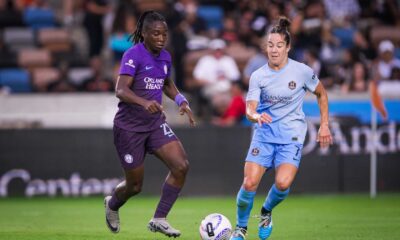
 Orlando Pride2 weeks ago
Orlando Pride2 weeks agoOrlando Pride vs. Houston Dash: Preview, How to Watch, TV Info, Live Stream, Lineups, Match Thread, and More
-
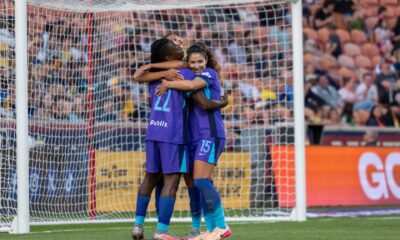
 Podcasts2 weeks ago
Podcasts2 weeks agoSkoPurp Soccer Episode 89: International Pride, Listener Mail, Houston Preview, and More
-
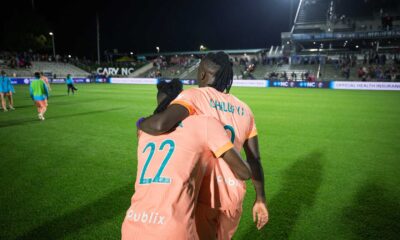
 Orlando Pride2 weeks ago
Orlando Pride2 weeks agoBarba Banda’s Goal Contribution Percentage Pace Among the Highest in NWSL History
-
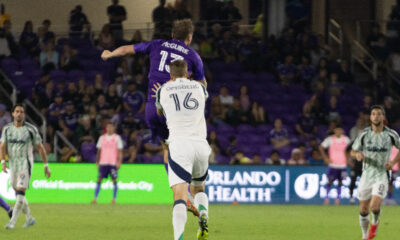
 Orlando City2 weeks ago
Orlando City2 weeks agoOrlando City Striker Duncan McGuire Undergoes Shoulder Surgery
-
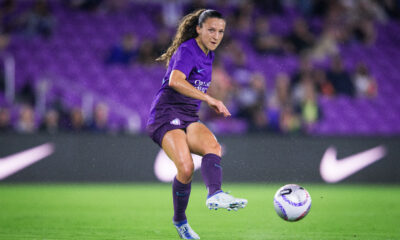
 Lion Links2 weeks ago
Lion Links2 weeks agoLion Links: 6/4/25
-
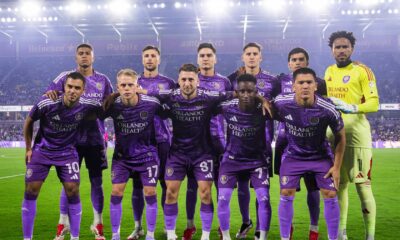
 Lion Links2 weeks ago
Lion Links2 weeks agoLion Links: 6/3/25
-
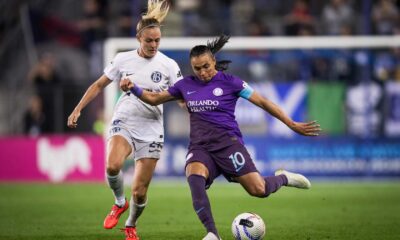
 Orlando Pride5 days ago
Orlando Pride5 days agoOrlando Pride vs. Bay FC: Preview, How to Watch, TV Info, Live Stream, Lineups, Match Thread, and More
-
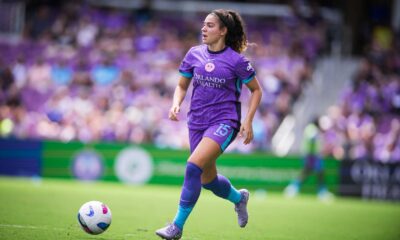
 Orlando Pride2 weeks ago
Orlando Pride2 weeks agoOrlando Pride vs. Houston Dash: Three Keys to Victory


